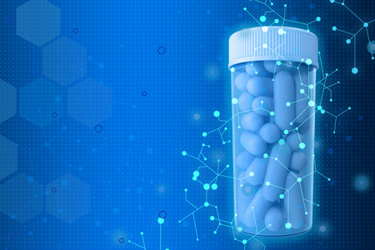4 Strategies To Formulate Poorly Soluble APIs

One of the toughest challenges facing drug development today is poor solubility of the API. It is estimated that 70%+ of the APIs in drug development pipelines are poorly soluble in water. There are several approaches to this problem. This article provides an overview of various techniques employed by researchers and pharmaceutical scientists to overcome the hurdles posed by poorly soluble APIs. The following are some of the strategies deployed to formulate poorly soluble APIs:
- Lipid based formulation (an excipient-based formulation strategy)
- Amorphous solid dispersions (an excipient-based formulation strategy)
- Nanotechnology
- Particle engineering
Given the broad nature of poorly soluble APIs, no single technique has universal application. A technique that works for one API may not work for another. In some cases, none of the techniques work and the formulation scientist may hit a roadblock. Although there are several options, challenges do still exist in formulating poorly soluble APIs.
Lipid-Based Formulation
Lipids are characterized by their hydrophobic nature, which makes lipids a candidate for formulating poorly soluble APIs. Lipids can be used as an excipient in formulating the poorly soluble API. Triglycerides, a category of lipid, are often used as excipients to enhance the solubility and bioavailability of poorly soluble APIs. Lipid formulations, such as microemulsions, self-emulsifying drug delivery systems (SEDDS), and solid lipid nanoparticles, have gained prominence in recent years. Microemulsions, consisting of oil, water, surfactant, and co-surfactant, form stable and isotropic systems capable of solubilizing hydrophobic drugs. Their ability to improve drug absorption through enhanced permeability and prolonged release makes them attractive for poorly soluble APIs. SEDDS, comprising lipids, surfactants, and co-surfactants, self-emulsify in the gastrointestinal tract, forming fine droplets that enhance drug solubility. The versatility of SEDDS in accommodating various drugs and their potential for improving oral bioavailability make them a valuable formulation strategy. Solid lipid nanoparticles, composed of lipids that are solid at room temperature, offer advantages such as controlled drug release and improved stability.
Amorphous Solid Dispersions
Amorphous solid dispersion (ASD) is one of the hot topics in addressing the poor solubility challenge. This formulation strategy involves turning a crystalline API (which most poorly soluble APIs tend to be) into an amorphous form using a carrier that is usually a polymer. Recently, non-polymeric excipients such as sucrose acetate isobutyrate also have been used to formulate poorly soluble APIs. ASDs involve the incorporation of APIs into a matrix, resulting in the formation of amorphous, high-energy states that enhance solubility. Polymeric carriers, such as hydroxypropyl methylcellulose (HPMC), cellacefate (cellulose acetate phthalate), and polyvinylpyrrolidone (PVP), have been widely used in ASD formulations. Formulation scientists are looking to add more excipients to formulate amorphous solid dispersions because although there are options for polymers and non-polymers, not every excipient might be compatible with a particular API. These polymers create a stable environment for the amorphous drug, preventing recrystallization and maintaining an increased dissolution rate.
The key advantage of ASDs lies in their ability to enhance the apparent solubility of poorly soluble drugs without altering their chemical structure. However, there are challenges related to stability and manufacturing, which makes it important to continue pursuing research in the ASD space. Typically, but not always, formulating an ASD requires hot melt extrusion or spray drying, neither of which may be the most cost-effective manufacturing technique.
Nanotechnology
Nanotechnology involves increasing the surface area to improve solubility, leading to improved bioavailability. Examples of nanocarriers include liposomes and micelles, which are being actively researched for formulating poorly soluble API. Liposomes, composed of phospholipid bilayers, have gained attention for their ability to encapsulate hydrophobic drugs and improve their solubility. The lipid bilayer structure mimics cell membranes, facilitating drug transport and absorption. Additionally, surface modifications can be employed to tailor the release profile and improve targeting. Micelles, formed by self-assembly of amphiphilic molecules, create a hydrophobic core that encapsulates the API. Their small size and stability in aqueous environments make them suitable candidates for drug delivery.
While this formulation technology offers promise, one of the biggest drawbacks is drug loading. Since the formulation involves nanoscale material, it naturally limits the drug loading, making the technique ineffective for formulations that require higher drug loads.
Particle Engineering
Rather than using an excipient, this method aims to alter the nature of the particles of the API to achieve the desired bioavailability. This technique involves manipulation of the particle size and morphology to improve dissolution rates and facilitate drug absorption. Some of the strategies include micronization, nanosuspension, and co-crystallization.
Micronization involves reducing the particle size of the API to enhance its surface area, leading to improved dissolution rates. This technique has been successfully employed to formulate poorly soluble drugs, but issues such as poor flow properties and stability concerns may arise.
Nanosuspension is a formulation approach wherein drug particles are reduced to the nanoscale and stabilized in a liquid medium. This technique offers advantages such as increased saturation solubility and improved bioavailability. Nanosuspensions have been explored for various routes of administration, including oral, parenteral, and ocular.
Co-crystallization involves the formation of multi-component crystals to enhance the solubility of poorly soluble APIs. By combining the API with another crystalline compound, researchers aim to alter the physicochemical properties of the drug, leading to improved solubility and dissolution rates. Co-crystals have shown promise in overcoming solubility challenges, but issues related to scalability and regulatory approval need further exploration.
While particle engineering may lead to very effective solutions, it is also a complex strategy to deploy. Not every API is conducive to particle engineering. Also, particle engineering is a rather nascent and emerging space, making this route very expensive.
Conclusion
The problem of poor solubility has been researched and published for several years now. While there are some wonderful APIs that will enable cures, they are not easily incorporated into a formulation for the body to absorb. While certain problems are isolated to parts of the industry, other problems affect the entire industry, and poorly soluble API is one such problem. Hence, there is a lot of ongoing research in this area. Despite years of research, formulation scientists still have APIs that are not suitable with existing technologies. Research and investment need to continue in this space to improve human health and well-being.

Rajendran (Raj) Arunagiri has been in the pharma industry for a decade and has successfully developed and launched a new excipient. He is a co-author of technical articles and is an invited speaker at conferences focused on excipients and drug delivery. He specializes in the area of poorly soluble APIs and modified release. Arunagiri welcomes you to reach out to him for questions, comments, and collaboration ideas at raj.gceb@gmail.com.
